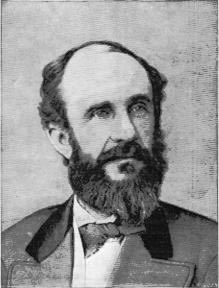Of all the land laws affecting Nebraska, the Timber Culture Act of 1873, designed to promote the planting of trees, was perhaps the least successful and subject to many abuses. The author of the act was U.S. Senator Phineas W. Hitchcock of Nebraska. The Timber Culture Act was repealed in March 1891.
Originally, a timber claim could be filed by anyone. In 1874 the act was amended to require claimants to meet the same age and citizenship qualifications as the pre-emption and homestead acts. Not more than 160 acres could be claimed. No more than one 160-acre timber claim was permitted in each section. Later amendments to the law made it possible for the total acres claimed to be in several smaller tracts as long as the aggregate did not exceed 160 acres. Timber claims did not require residence on the land.
The original law provided for the planting of forty acres of trees on each 160 acres. This requirement was later reduced to ten acres, to be planted according to the following guidelines: When 160 acres were claimed, at least five acres were to be plowed during the first year. During the second year, this plowed acreage was to be cultivated and a second five acres plowed. In the third year, the initial five acres was planted to trees and the second five acres cultivated. The fourth year required the planting of trees on the second five acres, making a total of ten acres in trees. Not less than 2,700 trees were to be planted on each of the ten acres, or a total of 27,000 trees! Failure to comply with the tree planting procedures made the timber claim subject to cancellation after one year. Certain exceptions or extensions were allowed in the event of grasshopper devastation or the failure of seeds or cuttings to germinate.
At the end of eight years from the date of entry, the settler could make final proof if the necessary conditions had been fulfilled. Five additional years were allowed to make proof, or a total of thirteen years from the date of entry. The claimant had to prove that the trees had been planted and cultivated and that not less than 675 living trees per acre had survived. An affidavit or “timber culture proof” had to be completed by the claimant and two witnesses before the final certificate and patents were issued.
Historian Everett Dick noted in Conquering the Great American Desert: Nebraska, published by the Nebraska State Historical Society in 1975, that the timber claim offered homesteaders an opportunity to secure another quarter section of land. But planting and cultivation of trees were sometimes done in such a haphazard way that there was little or no chance that the trees would grow to maturity. Although millions of trees were set out in an attempt to qualify for land under the Timber Culture Act, very few groves resulted from this activity. In Nebraska 8,876,351 acres were entered as tree claims, but final proof was made on only 2,456,696 acres.
Phineas W. Hitchcock, author of the Timber Culture Act. From Omaha Illustrated (1888).




